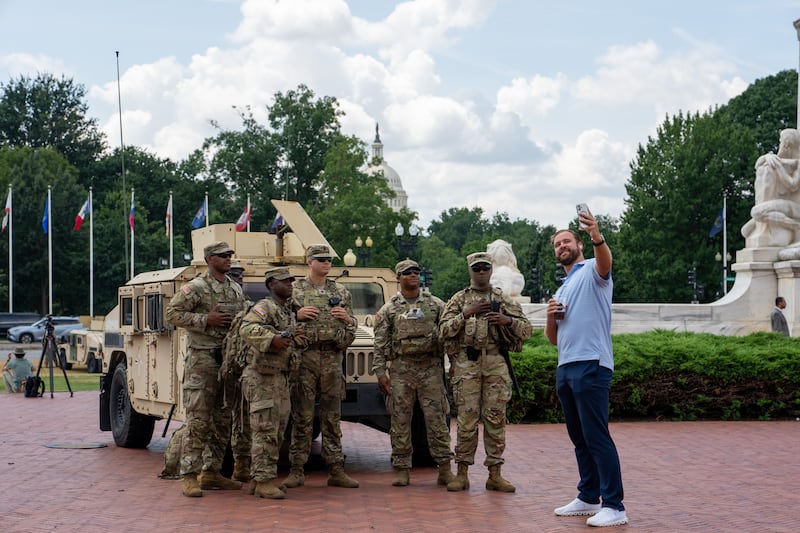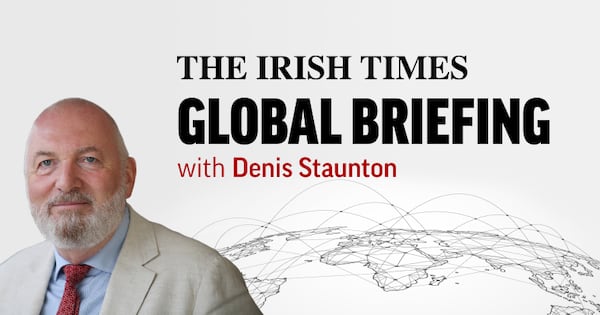Residents of Georgetown, the redbrick, hushed, window-boxed confection of ideal living framed around its historic university campus and the deathless legacy of a young tousled-haired senator from Massachusetts, were surprised to see members of the National Guard patrolling their neighbourhood. But there they were, striding along M Street.
What could be happening on the mean streets of Georgetown, they wondered? Civil unrest among the ubiquitous line of teenage customers waiting in line to get into Brandi Melville? A marathon debate over a reserved parking spot between two professors in the philosophy faculty?
One of the unfair myths about Georgetown is that the 1970s community declined the city’s plans to dig a Metro tunnel when the network was being extended in order to keep the neighbourhood just so. Many papers and articles have been written explaining that the truth was more complex: the hardness of the rock; an insufficient population to justify the need.
Either way, Georgetown has no Metro line and therefore remains slightly apart not just from Washington, DC, but on dreamier days – when the petals are strewn on its redbrick streets and the taverns and restaurants, sun-kissed and blessed – from reality itself. It is a living, breathing dream machine.
READ MORE
On March 17th last year, the White House prepared for what turned out to be president Joe Biden’s final come-all-ye for the Irish in the green room. It was a Saturday so the hot spots around Adams Morgan and Connecticut Avenue were busy with green-clad revellers for “St Patty’s Day”. But the local news reports carried a story that seemed shockingly local key. Seven people had been shot in a late night mass-shooting incident at a city centre apartment complex. Two were dead, five were wounded. The story was a footnote in the local networks and did not feature nationally.

What made the shooting stand out is that it occurred in the northwest of the city. Washingtonians are quite upfront about the demarcation lines within the city, with the wards of north and west essentially cocooned from the deprived neighbourhoods to the south and east of the city riven by shootings and drug-related crimes and civilian safety issues.
By late 2023 stories of indiscriminate carjackings, occurring even in Georgetown, were worrying residents and the news networks alike. The gentrification of neighbourhoods such as Shaw, in the heart of downtown, and parts around the Capitol were juxtaposed with interviews of the incoming residents who reported accounts of late night gunfire and antisocial behaviour. None of the sales brochures had carried news of this.
It left long-term Washingtonians fearing a return to the worst years of the early 1990s: the city was the murder capital, as well as the official capital of the US in 1991, with 482 murders.
As national attention became riveted to the presidential election last year, Donald Trump issued many dark proclamations about the city and promised to clear it up when he returned. Meanwhile, the city’s administrative and metropolitan police force began to get to grips with the issue. The crime statistics fell dramatically. Some 273 people were killed in 2023; by the end of 2024, that had fallen to 187 homicides. But as Megan McArdle pointed out in her Washington Post column, that still represents about 27 people for every 100,000 residents. It’s an alarmingly high figure compared with other big east coast cities – in Boston the ratio is 3.7 per 100,000 residents and in New York, another city president Trump likes to depict as out of control, it is 4.7.

The declaration of a citywide emergency by Trump this week, and the arrival of uniformed National Guard and FBI agents and an assortment of other law-enforcement agents, has provoked a strange response. Street protests by residents have been vocal but limited. The image of a lone white man in summer wear repeatedly yelling “fascist” at uniformed patrolmen before hurling his Subway sandwich at the guardsman and then sprinting away into the night spoke volumes about the pure weirdness of this moment.
The uniformed figure was, of course, doing his job, as he had been ordered to do. Kash Patel, the director of the FBI, took to X to gravely confirm that the protester had been charged with a felony, provoking both disgust and mirth. For what? Illegal use of a Spicy Italian? In a final twist, it emerged that the protester was an employee of the Department of Justice.
On Wednesday night the first big push by the newly bolstered Washington law enforcement troops called into the city by Trump, there were 45 criminal arrests for assault, illegal drugs and narcotics, including three possessions of illegal firearms. Many people will welcome the removal of these threats from the streets – even if the overall figure seems low for a city under a state of civil emergency. The worry is that by day 25, Washingtonians could find themselves apprehended for flicking a cigarette butt into the gutter.

The broader questions – as to whether this is simply a 30-day distraction, or whether Trump will make good on his intention to call for an extension of the thirty-day limit, or whether this is the first intimation of a hitherto unimaginable authoritarian police era – drift through the hectic days. As ever with Trump, it is impossible to predict.
But if it is the start of a plan to draft in federal enforcement to other big cities across the United States, then a sandwich hurled in frustration will be the least of it.

















